Author Archives: 2010admin
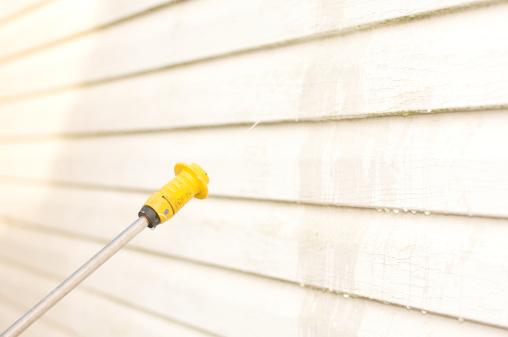
We get it. Those long, lazy days of summer probably don’t motivate you to do work on the house. But a few key improvements can save you a lot of hassle in the colder seasons with the added bonus of increasing the value to your home. If you play your cards right, you can score big-time savings on energy bills, avoid costly repairs, and enjoy the peace of mind that comes from completing some much-needed updates. Here are five summer projects we recommend.
- Repair or replace your roof. The summer months are the best time to work on your roof, as new shingles need heat in order to properly form weathertight seals. To start, clean off any moss or fungi from your roof with a stiff brush to keep moisture from collecting. Next, check your shingles to make sure that they’re lying flat against the roof. If you find any cracked, damaged, or buckling shingles, it’s time for a repair.
Keep in mind, the average roof lasts about 15-20 years, so if you’re getting close and notice sagging or drooping, then you may be in need of a replacement ASAP. When in doubt, get a professional opinion to avoid any further damage to your home.
- Power wash outside. Every exterior can use some TLC after the rough elements ensured in the winter months. A power wash can work wonders on your siding, driveway and sidewalks, and deck to give your home a like-new appearance. There’s nothing more satisfying than watching all of that grime, dirt, and debris disappear to expose that sparkling clean exterior underneath!
- Re-side your exterior. Sometimes power washing may just not cut it. And in this case, it may be time to reside the exterior of your home. Old siding is known for developing mold, mildew, and rot, which also causes flaking and peeling long before your house should actually need a new paint job. And the warm weather of summer presents the perfect time to re-side. You’ll be amazed at the transformative impact the right style can have on your tired-looking exterior.
- Treat your windows. Poor window sealing and treatments are one of the top causes of high energy costs in both the summer and winter months. If caulking around your windows this past fall didn’t stop the chill this winter, then it may be time to consider a window replacement. Choose from sliders, geometric patterns, double-hung windows, and more for a nice visual upgrade with energy-efficiency benefits. Plus, new windows will help you really take advantage of more sunlight all season long!
- Plant shade trees. A few rough days in the heat is definitely worth the reward that planting shade trees can provide. Not only are they great for beautifying the yard and offering a cool spot to relax outside, but it’ll also help you save on your cooling bill. Trees are a simple way to keep the sun off of your house, not to mention they do a lot for curb appeal! We recommend visiting a local nursery to find what would be best suited for your yard.
Feeling adventurous and want some more worthwhile projects to tackle? Here are a few other projects that may be worth grabbing your tool kit for:
- Swap out your entry door
- Reface your cabinets
- Clean out your gutters
- Upgrade your ceiling fans
- Install new countertops
- Invest in a smart thermostat
- Organize your closets and pantry
If you encounter any issues as you work on these various summer projects or simply want a professional’s help, contact our team for your home maintenance repairs.
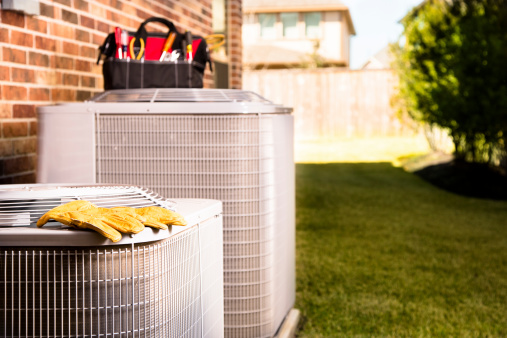
Did you know that heating cooling and ventilation together account for the largest energy expense for Americans — especially during the summer. (according to the US Department of Energy). So as you open the window to watch the flowers bloom and feel the warmer air that spring brings, it’s easy to forget the issues that the powerful summer heat can cause your system in just a few weeks.
Don’t wait until your AC unit is suddenly blowing hot air on a 90-degree day or stinking up the house with a bizarre odor to actually check it out. The best and safest way to ensure your unit is ready for summer’s worst is having a trained technician come take a look (we can help there), but there are also things you can do to keep your HVAC running efficiently through the hottest months and into fall. Here are 6 tips:
- Change your air filter every 30 days. A dirty air filter will cause your HVAC system to work a lot harder than necessary, preventing it from cooling your home efficiently. A simple filter swap can save you from costly utility bills — especially in the summer when your unit is already working overtime. For this reason, your filter changes may also be more frequent over the next couple of months, but a quick check will let you know for sure.
- Keep your outdoor condenser clean. Your outdoor unit is essential for AC efficiency and functionality. Check the area surrounding your HVAC system, and clear away any leaves, branches, or dirt that may have piled up around your unit. This is a simple, no-cost form of maintenance that should be done year-round to prevent issues from built-up debris blocking your system.
- Increase your thermostat. Keep your house warmer than usual when you’re away or out of the house for long periods of time. Not great at remembering stuff like this? Consider installing a programmable thermostat. This will allow you to set specific temperatures on timers to adjust automatically and cool or heat your space only as needed, which reduces utility costs and keeps your air conditioning system from using more energy than it needs to. We also recommend that you avoid setting your thermostat at a colder setting when you first start it up — it doesn’t cool your home any faster and could result in excessive cooling and extra expenses.
- Use or install fan systems. Fans are a simple, low-energy option for cooling down individual rooms. They maximize airflow and prevent excess heat from rising in the spring and summer months. And don’t forget to turn on the fan in the bathroom when you bath or shower — it will remove the extra heat and humidity from your home.
- Check your windows. As sun penetrates the glass of, it generates heat and causes the temperature inside to rise. Hanging drapes or blinds is an easy way to combat this problem. You can also prevent warm air from leaking into your home by sealing your windows and doors with caulk or weatherstripping for more full proof coverage.
- Schedule regular maintenance. Finally, the best way to maximize energy efficiency is routine HVAC maintenance. Research shows that your cooling system typically makes up about 60-70% of your summer electric bill. And if your unit is more than 15 years old, upgrading or replacing it could cut your energy costs by 20-40%. And that seriously adds up!
If you’re running into any issues with your HVAC system or want to get it checked out before summer, contact our professionals today. You can keep your cool, because we’ve got you covered.
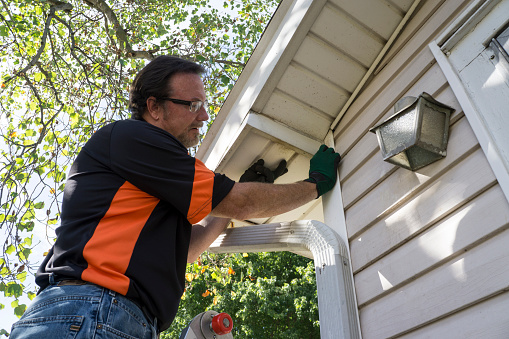
It’s amazing how a little sunshine and fresh air can really motivate homeowners to get to work. With spring just around the corner, you might find yourself looking for ways to spruce things up around the house. And if you’re not, it’s the perfect time to start. The colder months can be difficult on your home, so it’s important to check-in around the house and take care of any maintenance projects so you can enjoy those beautiful spring and summer days to the fullest!
While they might not be the most exciting things on your to-do list, you’ll thank yourself for them later. Here are five key spring home improvement projects we recommend to get you started.
1. Start from the Top – Inspect Your Roof
Your roof is your home’s first line of defense against inclement weather, and what may seem like a tiny issue has the potential to turn into a disaster if water is able to get indoors.
• Check for any damage that your shingles may have sustained under heavy snow or ice and replace any broken pieces or those that have shifted out of place.
• Look for water spots on your ceilings or exterior walls, curled shingles, and rust or stains where exterior walls meet the roof — this could be a sign of a leaks. And any water trapped underneath shingles can cause rotting so look for this too.
• Clean out your gutters so they can do their job during those April showers. A clear flow keeps water from building up and pooling around your foundation and your basement. Gutter guards are an easy and inexpensive way to keep leaves and debris from clogging your gutters.
2. Bring on the Heat — Prepping Your AC Unit
Just like we recommend an HVAC tune-up in the fall before the real cold strikes, spring is the best time to make sure that your AC unit is ready to go for summer. The last thing you want is to feel warmer inside than it does outside when it’s a blistering 90+ degrees. Change your filter, make sure the unit is draining properly and in good condition, and check for any leaks in your hose connectors. If your AC unit is more than 10 years old, or it’s been a while since your last routine check, contact our team at Madsen to come out and make sure everything is in working order for when you need it most.
3. Keep the Cool in — Check Your Insulation
Now that your AC is up and running, you don’t want that nice cool air going right out your doors or windows — because it will cost you. Check to see if the caulking or weather stripping around your windows is still sealed tight, and if you noticed condensation between double-glazed windows during the winter, this might be a sign that it isn’t secured properly. This condensation build-up and other insultation leaks can lead to mold, one of your biggest enemies to homeowners. Check your attic and any areas that may not be as well-insulated for any signs, which typically appear as black or gray blotches.
4. Boost Your Curb Appeal — Repair Your Siding
Your siding may have also sustained some damage from snow or ice during the last few months. New siding can make your home more energy efficient and be a stronger defence against summer storms. Damage can be frustrating, but new siding can also instantly energize a dull, weathered exterior to boost your curb appeal for spring.
Check for any of these signs that you may need to repair or replace your siding:
• Water stains
• Cracks
• Rotting
• Holes or signs of chewing from any critters trying to dig their way in
• Warping
• Gaps
5. Use that Green Thumb — Start Your Lawn Care
As everything starts to melt and things start looking a little greener, consider starting your lawn prep now so that it can reach its full blooming glory (and make you house the envy of your neighbours). Start by raking any leaves, branches, or debris that may have collected over the winter, so that once you have a clean slate, you can check your outdoor water system — ground sprinklers, pipes, and faucets — and make any necessary repairs. Soon it’ll be time to rev up that lawn mower again!
Some other great spring project ideas:
• Rinse down the patio furniture
• Upgrade or restain the deck
• Get the grill ready
• Install a new mailbox
• Clean the windows
• Apply fresh paint, inside or out
• Tackle that spring cleaning list — wash drapes, shampoo carpets, clean windows, dust in those tough to reach spots
If you run into any issues as you prep your home for the warmer days ahead, contact our team for any professional home maintenance repairs.
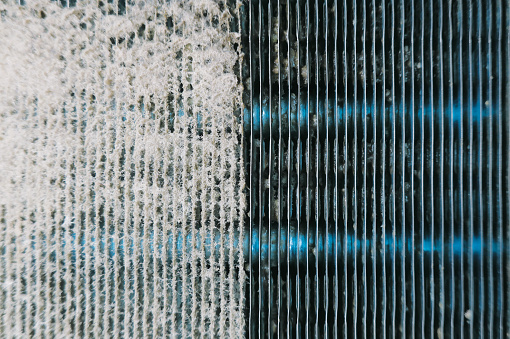
During the winter, there’s nothing quite like cozying up under a mountain of blankets, waiting for your delivery guy as you watch an entire series of that new show on Netflix. But while the weather outside is frightful, our air inside usually gets worse too. As our homes continue to get more energy-efficient, there’s a lot less warm air escaping and cold air getting in during the winter — which keeps us nice and toasty. But that also means that the amount of recirculated air also increases, carrying greater concentrations of pollutants, allergens, dust, and mold spores. (Ok, yuck!)
As you can probably guess, this poor indoor air quality can be cause a variety of health issues, from fatigue or flu-like symptoms, itchy eyes, nose and/or throat, and aggravation of existing upper respiratory problems, as well as an increased likelihood of developing other chronic illnesses. But the good news is there are some simple methods to improve the air quality in your home during the winter so you can binge-watch away without worry.
In order to keep you and your loved ones healthy and happy during the colder months and into spring, here are six ways to help keep your in-home air as pure as possible:
- Keep things clean. Sounds like a no-brainer. Consistent cleaning is one of the first and best ways to maintain in-home air quality. But there is a catch — harsh chemicals from cleaning products can linger in the air, especially in the winter. These higher concentrations can cause harmful health implications in the long run, so consider some natural substitutions, and always be sure that you use any cleaning products in a well-ventilated space.
Frequently cleaning your carpets with a HEPA filter vacuum can dramatically improve the air quality in your home, but also pay special attention to floors and other potential dusty areas, like under or behind furniture. Make it a routine to do a quick sweep once a week as it really does wonders for keeping dust and dirt out of your air. - Maintain the humidity levels in your home. The increased dryness in the colder months can cause discomfort and illness that makes staying safe from the bitter cold actually pretty risky. A humidifier will help everyone breathe more comfortably by helping the air maintain the right amount of humidity automatically. Ideally, your home should remain between 30 – 50% humidity year-round, so set your home up to stay within that range to avoid any issues that come with extra moisture in the air.
- Add a few plants. Houseplants help liven up any living space, but did you know they clean and purify the air too? It’s true — adding more plants around the house is an easy way to clear out pollutants year-round. And they look great, too! Win, win.
- Regularly change your air filters. HVAC filters are the first line of defense against air pollutants, but they need to be replaced regularly in order to function properly. If left dirty, they can become a major contributor to poor indoor air quality. Make sure they are well-secured and avoid any gaps between the frame and rack, so that no air bypasses without being filtered. If you haven’t had your HVAC serviced in over 6 months, contact us to help you make sure it’s doing its job.
- Be sure to ventilate a few times a week. We know the thought of opening a window or turning on your ceiling fans when it’s 30 degrees out sounds crazy but doing so for just a few minutes every now and then will help get some fresh air circulating in your home, getting rid of any stuffiness and improving quality.
- Consider installing an air purifier. Taking more serious measures to improve your air quality doesn’t have to be a big investment. Our Air Scrubber Plus technology is powerful, yet affordable so that you can breathe easier in more ways than one. It can reduce the amount of dust, allergens, and other air particles in your home by 90%. It’s so efficient, it’s not only NASA-approved, but it will also help your HVAC system run more efficiently.
To learn more about improving your in-home air quality and tips to help your whole family breathe easier this winter, contact Madsen Inc
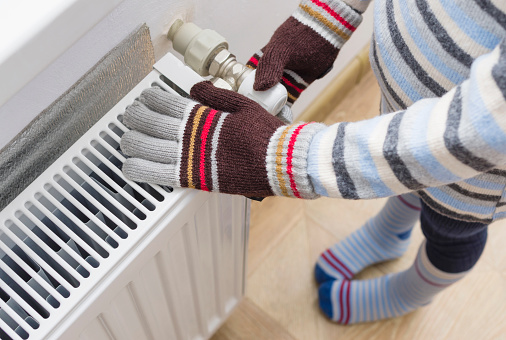
Do you notice your water taking longer to heat up now that it’s colder? Are your showers lukewarm on the highest setting, leaving you shivering? As the coldest days of winter come around, it’s important to ensure your hot water heater is functioning properly to make sure you aren’t left out in the cold.
At Madsen Inc, we understand these issues happen. That’s why we recommend a routine inspection of your hot water heater at the end of summer or early fall so that you aren’t caught off guard with water that’s colder than the temps outside. But until then, here is a list of possible reasons that your hot water heater might not be functioning at its best, and a few easy ways to fix it!
Check the temperature on your hot water heater.
In the winter months, your heater is working harder to fight colder temperatures both outdoors and underground, so while the recommended thermostat setting is 120 degrees throughout the year to energy and ensure safety, this may not be enough to make your water feel hot enough in the winter months. Try adjusting your heater by 5 to 10 degrees and see if that improves performance.
Pro Tips:
- We recommend reading through your device manual before making any adjustments.
- Wait a bit after adjusting the thermostat to test your hot water – it usually takes about a half an hour for the heater to adjust to the new temperature.
- Be cautious! Change the temperature only a few degrees at a time to avoid scalding.
Drain the water tank.
Sediment buildup in the water tank is a common problem. It builds up naturally at the bottom of hot water heaters over time and can reduce your unit’s efficiency. Flushing it out at least once a year can prevent damage to your device and keep it functioning properly.
Check the age of your device.
Just call us with your model and serial numbers, and we’ll check if your hot water heater is still under warranty, or if it’s ready for replacement. You can also send us a picture of the plate or sticker on your device, and we’ll look it up for you.
Check if there’s a lack of insulation.
Make sure your pipes and heater are insulated properly as frozen or busted pipes can wreak all kinds of havoc in your home. Good insulation also makes it easier and faster to get hot water flowing when you turn it on. Not only does that mean less time waiting for that relaxing hot shower, but as an added bonus, it helps you conserve energy, saving you money on your water bill. Our team can help you with extra insulation if this is necessary.
Inspect the heater for any possible damage.
There is a possibility that your hot water system could be leaking. We do not recommend trying to fix a leak yourself — give us a call right away to prevent waste and potential further damage.
Other things you can do:
- If your hot water heater is in the basement or garage, try covering it with heater blanket. These specially made blankets can help insulate your tank in colder areas of your home where you can’t keep the temperature at least 55 degrees.
- To keep your pipes from freezing (and worst, potentially bursting), turn on your faucet and let it drip a little bit on especially cold days. Even just a small continuous stream of warm water can help prevent your pipes from ever reaching their freezing point.
At Madsen Inc, we’re here to help you make sure your water is exactly how you like it! If you have any questions or wish to schedule an appointment, contact us today.


